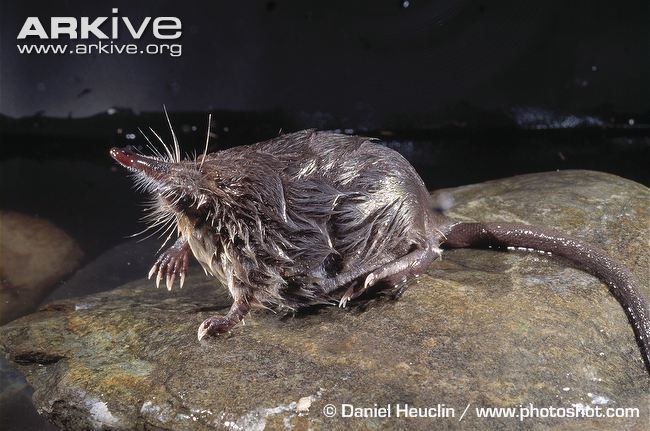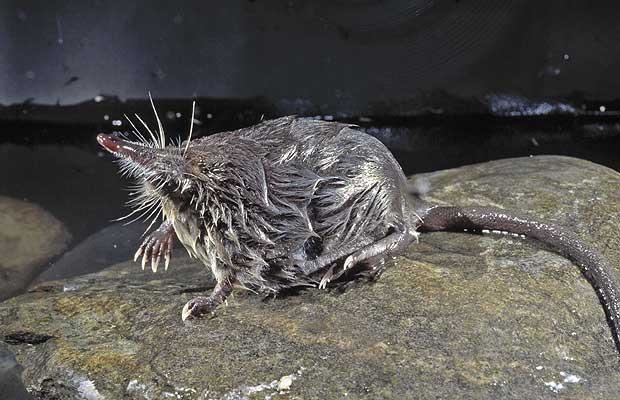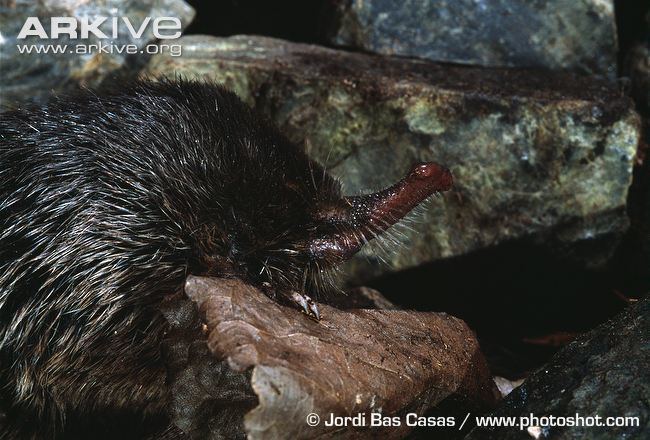Subfamily Talpinae Genus GalemysKaup, 1829 Phylum Chordata Rank Species | Tribe Desmanini Scientific name Galemys pyrenaicus Higher classification Galemys | |
 | ||
Similar Galemys, Desman, Russian desman, Pyrenean chamois, Mediterranean water shrew | ||
Pyrenean desman the last of the mohicans
The Pyrenean desman (Galemys pyrenaicus) is a small semiaquatic nocturnal mammal related to moles and shrews, and is one of only two surviving species of the tribe Desmanini. The range of the species centers on northwestern Spain and northern Portugal, but it is under threat due to changes to its habitat. In Portugal it's called "toupeira-d'água" which means "water mole".
Contents
- Pyrenean desman the last of the mohicans
- Pyrenean desman galemys pyrenaicus
- Taxonomy
- Description
- Habitat
- Conservation
- References

Pyrenean desman galemys pyrenaicus
Taxonomy

Along with the Russian desman (Desmana moschata), it belongs to the tribe Desmanini. There were previously a greater number of related species some millions of years ago in that tribe, but the other species have all since become extinct.
Description

The Pyrenean desman is 11 to 16 cm (4.3 to 6.3 in) long with a rounded scale-covered tail of 12 to 16 cm (4.7 to 6.3 in). It weighs 35 to 80 g (1.2 to 2.8 oz). Pyrenean desmans have long sensitive noses, and small front paws but large webbed back paws. They can close off their nostrils and ears with valves in order to stop water penetration, and use echolocation.

The desman's body is covered in fur, with the exception of its tail and nose. Markings typical of the species are a brown body with a light coloured underside. The nose is black and is covered in whiskers, which it uses to feel the movement of prey as it sticks its nose into mud or crevices while searching for food. The Pyrenean desman can live at least 3.5 years. The animals are nocturnal hunters of small invertebrates, snails and shrimp. They breed up to three times a year, with the period of gestation lasting around thirty days. Three to four young are born in each litter.
Habitat

Pyrenean desmans are proficient swimmers, suited to their aquatic habitat, although their claws also allow them to be good at climbing. They live in pairs, with the male having a slightly larger territory than the female. Both members of the pair scent mark. They have the reputation of being aggressive to other adult members of the species.

More recent studies have shown that data on the range of their habitats collected during the 1980s and 1990s is unreliable. Their range had previously been thought of as the northern half of the Iberian Peninsula and the Pyrenees mountains stretching into France. The habitat of the Pyrenean desman is under threat, and research has shown that it "is endangered or almost extinct" in the southern areas of its range. Researchers have determined that this is the result of the construction of dams, and also that the species may be vulnerable to water pollution. Included in their range is the Alt Pirineu Natural Park in the Pyrenees, where desmans live along mountain streams.
Conservation
Conservation efforts are led by Estrategia Nacional de Conservación del Desmán Ibérico and Proyecto LIFE+ Desmania, with the European Commission contributing 50% of the funding. Threats include dams, aggregate mining, poor water quality, and an invasive species – the American mink.
